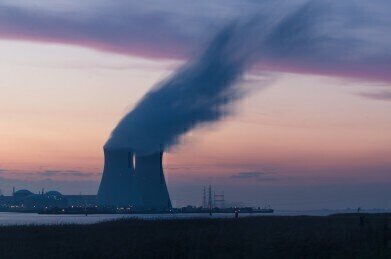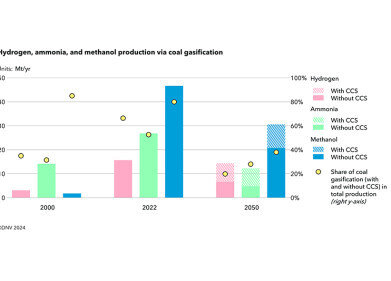Green Energy
Promise of Clean Energy One Step Closer with Nuclear Fusion Milestone
Nov 03 2014
A crucial milestone has been reached by US lab researchers in their quest towards cracking self-sustaining nuclear fusion.
Harnessing fusion, the process powering the sun, has the potential to create an abundant source of low-cost energy. Despite being the object of significant study, it has so far remained elusive, as artificial fusion reactions created here on earth consume more energy than they produce. Following a breakthrough by the $3.5bn National Ignition Facility (NIF) in Livermore, California, there are new hopes of achieving a self-sustaining reaction, or ignition where the power output exceeds the power required to start the reaction.
Scientists at NIF reached the point of nuclear fusion by heating and compressing a small pellet of hydrogen fuel using 192 beams from the world’s most powerful laser. According to a recent update, one NIF experiment in late September resulted in the amount of energy being produced through the fusion reaction exceeding the amount of energy consumed by the fuel for the first time in any facility in the world.
‘Promising’ breakthrough demonstration
NIF is yet to reach the point of ‘ignition’, a self-sustaining reaction where the amount of energy produced exceeds the energy supplied to the laser. This delay in research is known to be due to inefficiencies in the system, meaning that most of the energy delivered by the lasers is lost in the effort to achieve the temperatures required for fusion, rather than on the reaction itself. However, this latest breakthrough in fusion is the most promising in recent years, moving fusion research forward significantly.
It has been hoped that the NIF would make a breakthrough after almost half a century of striving towards this goal. The NIF team announced a plan in 2009 to demonstrate nuclear fusion providing net energy by the 30th September 2012. However, this deadline was unmet due to technical errors, and the output was less than that predicted by mathematical models. Later, the facility shifted its focus from fusion to nuclear weapons, part of its original purpose.
Nevertheless, the latest experiment’s results are in keeping with output predictions, which is encouraging both for future ignition research at NIF, and for general advocates of nuclear fusion.
Current nuclear power operates on the concept of nuclear fission, which is the splitting of the atom, rather than the fusing of the atom. NIF is one of several fusion research projects worldwide that are conducting research into nuclear fusion. One such project is the multi-billion pound ITER facility which is being constructed in Cadarache, France. In contrast with the NIFs approach to fusion, ITER aims to use the concept of ‘magnetic confinement’ to contain fusion fuel within a magnetic field.
The Nuclear Power Plant Generation
The Fukushima Daiichi Nuclear Power Plant is an example of the current use of nuclear power. Located in the Futaba District of Fukushima Prefecture, Japan. This plant has been disabled since it was hit by the magnitude 9.0 earthquake and tsunami on the 11th March in 2011.
Recently, an isotope ratio analysis of 235U and 238U in the soil was performed using ICP-MS, which you can read in this article: Soil Survey Related to the Fukushima Daiichi Nuclear Power Plant Accident. After the disaster, the Japanese government had planned to gradually reduce its dependence on nuclear power. However, Japan has since revised their nuclear power plan and a new energy policy has been approved which will see nuclear generation continue.
04/11/2014 – Story Update
Following an exchange with the press department of the Lawrence Livermore National Laboratory, we must regrettably state that there were some inaccuracies in this the story. We would like to raise the following details:
- The assertion “This delay in research is known to be due to inefficiencies in the system, meaning that most of the energy delivered by the lasers is lost in the effort to achieve the temperatures required for fusion, rather than on the reaction itself,” is not correct. Physics issues within the implosion itself is what has kept NIF from reaching ignition, not the laser system.
- “However, this deadline was unmet due to technical errors” is incorrect. There are no technical errors within the laser. Istead, there are only physics issues within the implosions, which is to be expected when you are exploring new physical regimes.
Events
Apr 24 2024 Sao Paulo, Brasil
May 05 2024 Seville, Spain
May 13 2024 Munich, Germany
May 23 2024 Beijing, China
May 23 2024 Beijing, China














